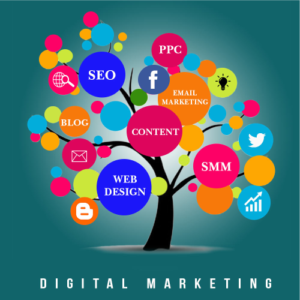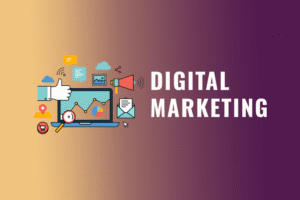A Comprehensive Guide to Content Marketing: Strategies, Benefits, and Best Practices
In today’s digital-first world, content marketing has become a vital strategy for businesses looking to attract, engage, and convert their target audience. With the increasing amount of content online, businesses must differentiate themselves by producing valuable, informative, and engaging content that meets the needs of their audience. Whether you are a startup or an established brand, a well-executed content marketing strategy can establish your brand as an authority in your industry, build trust with your audience, and ultimately drive long-term success.

What is Content Marketing?
Content marketing is the strategic creation, distribution, and promotion of valuable, relevant, and consistent content aimed at attracting and retaining a defined audience. The goal of content marketing is not to overtly sell a product or service but rather to provide valuable information that helps the audience solve problems, make decisions, and engage with a brand in a meaningful way.
Content marketing encompasses various types of content, including blogs, videos, podcasts, social media posts, white papers, case studies, infographics, and more. It’s an ongoing process that requires businesses to stay consistent in delivering high-quality content that aligns with their target audience’s interests, needs, and behaviors.
Key Benefits of Content Marketing
1. Brand Awareness and Authority: Content marketing enables businesses to showcase their expertise, providing insights and solutions to their audience’s challenges. This helps build brand authority and awareness within a specific industry or niche.
2. Increased Website Traffic: By optimizing content for search engines and sharing it across various platforms, businesses can increase website traffic and attract potential customers who are actively searching for solutions to their problems.
3. Audience Engagement: Content marketing fosters deeper engagement with customers by addressing their concerns, answering questions, and providing valuable resources. Engaged customers are more likely to stay loyal and share content, helping amplify your reach.
4. Lead Generation and Conversion: Well-crafted content can guide potential customers through the sales funnel, from awareness to consideration and finally to decision-making. Offering valuable resources, such as ebooks, webinars, or product demos, can entice leads to provide contact information, thus generating high-quality leads.
5. Cost-Effectiveness: Compared to traditional advertising, content marketing is relatively affordable. It can deliver long-term results, with evergreen content continuing to attract visitors and generate leads over time, even after it is initially published.
6. Improved SEO: Content marketing is inherently linked to search engine optimization (SEO). By creating content that answers users’ search queries and optimizing it with relevant keywords, businesses can rank higher in search engine results pages (SERPs), improving visibility and organic traffic.

Types of Content in Content Marketing
1. Blog Posts and Articles: Blogging remains one of the most popular forms of content marketing. Regular blog posts help establish thought leadership, improve SEO rankings, and drive traffic to your site. Topics can range from industry trends, how-to guides, customer success stories, product updates, and more.
2. Videos: Video content has seen exponential growth in recent years. From explainer videos to product demos and behind-the-scenes content, videos are a highly engaging and shareable medium. Video platforms like YouTube and Instagram are essential for reaching new audiences, while live streaming allows real-time engagement.
Professional Video Editing Course
3. Social Media Posts: Platforms like Instagram, Twitter, Facebook, LinkedIn, and TikTok allow businesses to connect with their audience in an interactive and informal way. Social media content can include everything from status updates to polls, infographics, and short-form videos.
4. Infographics: Infographics are visual representations of information, data, or knowledge. They are easily shareable and help simplify complex concepts. Infographics can drive engagement by breaking down large chunks of data into digestible, visual formats.
5. Ebooks and White Papers: These longer-form content types are often used in B2B content marketing. Ebooks and white papers provide in-depth insights on a particular topic and are typically offered in exchange for a user’s contact information, helping generate leads. Free E-Library
6. Podcasts: Podcasts are gaining popularity as a way for businesses to reach a wider, often mobile audience. Podcasts allow businesses to discuss trends, interview industry experts, and provide valuable commentary on topics relevant to their audience.
7. Case Studies and Testimonials: Real-world examples of how your products or services have solved problems for clients are powerful tools for establishing credibility and trust. Case studies and testimonials can be used on websites, in emails, or as part of sales presentations.
8. Webinars and Online Courses: Offering educational content in the form of webinars or online courses can provide high value to your audience. These formats allow for real-time interaction and can build authority while generating leads.
Content Marketing Strategy: How to Build a Successful Plan
Creating an effective content marketing strategy involves a clear and structured approach. Below are the essential steps to creating a successful content marketing plan:
1. Define Your Goals and Objectives for Content Marketing
Before creating any content, define what you want to achieve. Your goals could range from increasing brand awareness, generating leads, boosting customer retention, or driving traffic to your website. Be specific and set measurable objectives (e.g., “Increase organic website traffic by 20% over the next six months”).
2. Identify Your Target Audience for Content Marketing
Understanding your audience is the foundation of any content marketing strategy. Create buyer personas to represent the different segments of your audience. This will help you understand their challenges, preferences, and the type of content they consume.
3. Content Planning and Ideation for Content Marketing
Once you know your goals and audience, start brainstorming content ideas. Consider the questions your target audience is asking and the problems they are trying to solve. Use keyword research tools to identify what topics are trending in your industry and what search terms are driving traffic.
4. Content Creation
Begin creating high-quality, informative, and engaging content based on your plan. Make sure your content addresses the pain points of your target audience. Use a mix of different formats, such as articles, videos, and infographics, to keep your content diverse and appealing.
5. Content Distribution in Content Marketing
Distributing your content is just as important as creating it. You can use owned, earned, and paid media channels for distribution. Owned media refers to your website and social media profiles, while earned media includes shares, mentions, and backlinks. Paid media involves promoted content and paid ads on social platforms.
6. Promotion and Engagement in Content Marketing
To reach a wider audience, promote your content via email newsletters, social media, and influencer partnerships. Engage with your audience by responding to comments, questions, and sharing user-generated content. Use paid promotions to amplify high-performing content.
7. Measure and Analyze Performance
Regularly track and measure the performance of your content. Key metrics include website traffic, engagement rates, conversion rates, and lead generation. Use tools like Google Analytics, HubSpot, or social media analytics to track these metrics. Analyze what’s working and refine your strategy accordingly.
8. Repurpose Content in Content Marketing
Repurposing content allows you to maximize the value of your existing content. For example, you can turn a long blog post into an infographic or a series of social media posts. Repurposing saves time and helps ensure your content reaches different segments of your audience.
Content Marketing Best Practices
1. Consistency is Key: Posting regularly helps keep your audience engaged and improves your SEO rankings. Develop a content calendar to ensure consistency in your publishing schedule.
2. Quality Over Quantity: It’s important to focus on creating high-quality content that adds value to your audience rather than churning out low-quality posts just for the sake of quantity.
3. Focus on Storytelling: People connect with stories, not just information. Incorporate storytelling techniques into your content to engage your audience emotionally and make your messages more memorable.
4. Optimize for SEO: Every piece of content should be optimized for search engines. Use keyword research to identify relevant terms and include them in your content. Additionally, focus on creating high-quality content that satisfies user intent.
5. Personalization: Tailor your content to your audience’s preferences and needs. Use data to create personalized experiences, such as offering content based on user behavior or sending customized email campaigns.
6. Be Authentic and Transparent: In today’s digital landscape, consumers value authenticity. Build trust by being transparent about your brand and values, and avoid overly sales-driven messaging.
Conclusion
Content marketing is a Part of Digital Marketing. Content marketing is a dynamic and long-term approach to building brand awareness, fostering customer relationships, and driving business growth. By creating valuable, informative, and engaging content tailored to your audience’s needs, you can differentiate your brand in a competitive marketplace. Whether you’re using blog posts, videos, social media, or other forms of content, the key to success lies in consistency, quality, and a focus on delivering value to your audience.
As content marketing is a part of Digital Marketing which continues to evolve, staying informed about trends, new platforms, and changing audience preferences is essential to maintaining a competitive edge. With the right strategy, content marketing can be a powerful tool for achieving your business objectives and building lasting connections with your audience.
How to learn Content Marketing? Is Content Marketing Course Available?
Yes, you can learn Content Marketing Course form various platforms. The topic Content Marketing is widely covered into Digital Marketing Course. Advanced Digital Marketing Course is the best way to learn Content Marketing. You can also learn Content Marketing spreadly. You can join Udaan Institute of Information Technology Ahmedabad Gujarat for Digital Marketing Course with latest curriculum.



